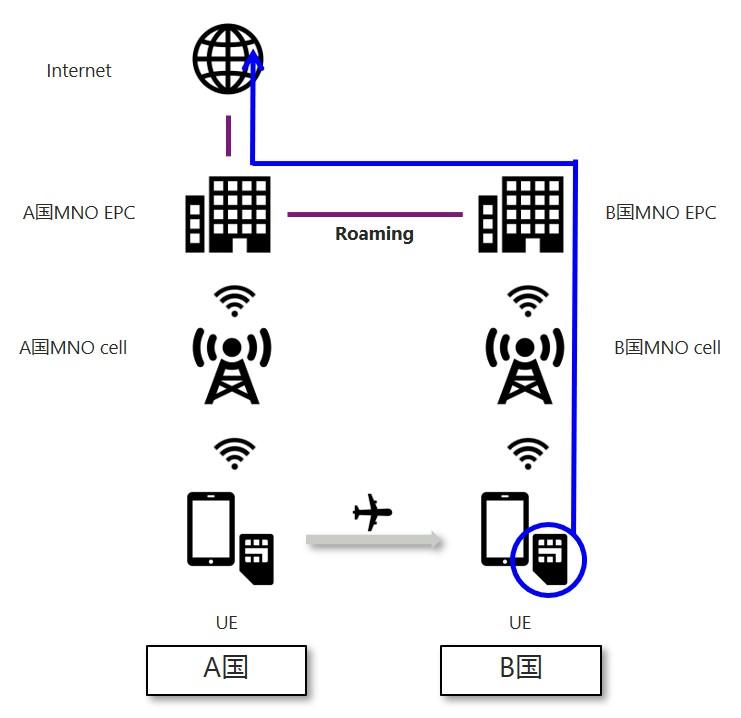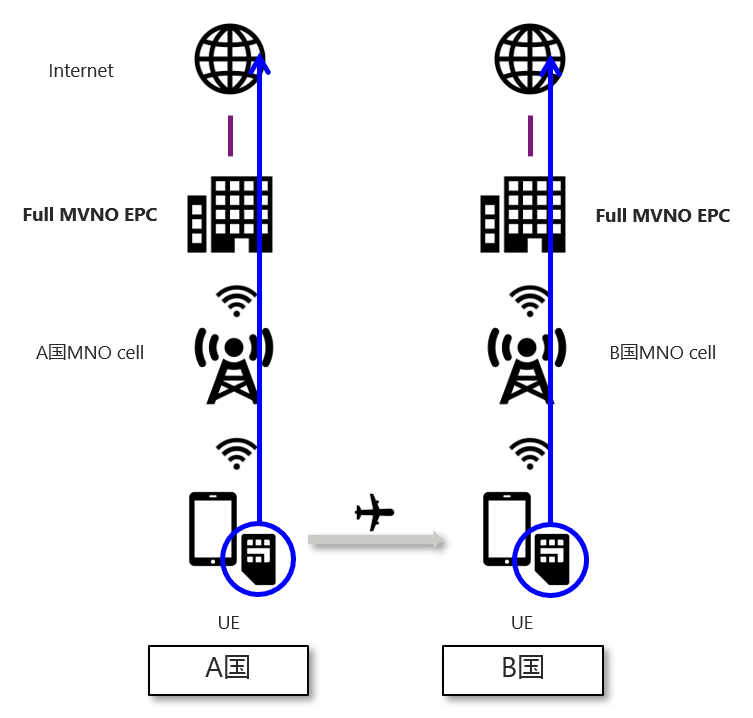
About Full MVNOs
MNOs and MVNOs
Mobilecellular communicationsbegan with the provision of services by telecommunications carriers (carriers) who own transmission line facilities. Transmission line facilities are mainly composed of base stations (Cell), core networks (EPC), and subscriber information equipment (HLR/HSS).
The MVNO business began in 2001, whenb-mobile(Nippon Telecommunications)began offering communication services that borrowedPHS communication lines.MVNOis a telecommunications carrier that provides mobile communication services by using mobile communication services provided by MNOs or by connecting with MNOs, and operates wireless stations (base stations) related to the mobile communication services. The Ministry ofInternal Affairs and Communications defines it as a person who has not established and is not operating it.
MVNOsprovide services by renting transmission line facilities owned by carriers. This eliminates the need for maintenance and management of transmission line facilities, which is the reason for providing low communication costs.
Full MVNO
AmongMVNOs, the number of business associations owning EPCandHLR/HSSin-house is increasing. Although there is no clear definition, such organizations are called Full MVNOs.
Full MVNOThe range of services that can be provided byMVNOsIt's getting more. In particularSIMsIn-house provision of cards, operation and management of stable communication, remote activation and profile changes, etc.

Roaming and Full MVNOs
Roaming at MVNOs and MNOs

Roamingunder contract bySIMscarIt is now possible to use communication services in the same way even if a terminal is brought overseas outside the service area without changing the code.
Regarding roaming, it is a mechanism that uses the communication service via the contracted core network once via the local operator in the area outside the service. Therefore, when using it, it is a condition that the operator under contract with the overseas local carrier has aroamingtie-up.
In the case of thefigure, when a SIMcardunder contract with a company in countryAis brought into countryB, it connects to the Internet via the core network in countryAthrough the company in countryB.
Roaming at Full MVNO

While it is not necessary to change the SIM card when changing areas,the increase in communication costs is an issue from the user's point of view because it connects to the contracted operator via the local operator. Also, as mentioned above, since the conclusion of aroamingalliance is a prerequisite, there is a problem that it is impossible to provide communication services by roaming in areas that have not been concluded.
On the other hand, Full MVNOdoes not need to have its own base station, so there is a feature that it can be established in countries around the world without depending on the area. Therefore, the concept of roaming is gone, and it is possible to use communication services as afull MVNOwithout depending on the area.
In the case of the figure, ifboth countriesAandBare developingfull MVNO services, communication is possible via the MNObase stations of each country.
Features of MACNICA Connectivity
MACNICA Connectivity for Cellularhas the following twofeatures.
◦ All-inclusive technical support: By providing the semiconductors and technical support required for communication board design, we can offer all-inclusive proposals and support from the initial stages of IoT development.
◦ Global support: Full MVNO communication services in 9 countries around the world, Roaming contracts with local carriers in 196 countries around the world, RSP support
In addition to selling eSIM, a wireless technology for global IoT that supports multi-carriers and does not require card replacement, Macnica also provides "Cellular Solutions" using eSIM. There are two types of eSIMs handled by Macnica: a card type that can be inserted into conventional devices, and a semiconductor type that can be mounted on devices, and you can choose which one to use depending on the purpose.
By providing almost all the semiconductors and technical support necessary for designing cellular communication boards such as communication modules, antennas, processors, and power supplies handled by Macnica, we can also provide bulk board design from the early stages of IoT development. It is possible to respond. This allows Macnica to serve as a single point of contact for technical support and purchasing, making it possible to provide one-stop solutions.
eSIMs are also ideal for global applications, as they allow remote operator switching without physical swapping. We will continue to expand our services, so please contact us for the latest information.
